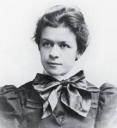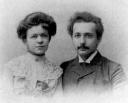I’m still hanging out in the Jurgen Neffe biography of Einstein, where he talks about the recurrent personality traits of geniuses (p. 25) based on research by Howard Gardner of Harvard. Gardner compared Einstein with the likes of Picasso, Freud, and Gandhi, plus three others less known. He discovered in all of them an intersection of the childlike with the mature. Gardner credits Einstein’s parents for leaving him alone with his dream-like childhood existence, the solitude they granted him, with his ability as a mature scientist to revisit and incorporate the “flow” of his childhood years.
Geniuses, Gardner says, require a decade of practical and theoretical work before they blossom. In Einstein’s case, he read and grappled mentally with ideas for ten years before arriving at the special theory of relativity. (FYI: The special theory is distinguished from and is a precursor to the theory of relativity.) Likewise, Einstein’s favorite composer, Mozart, wrote music for ten years before composing anything that made history. And it’s not about IQ. Creative geniuses have IQs well above normal, but the IQ above 150, the super IQ, almost never yields a creative genius, according to Gardner.
Creative geniuses are propelled by a force of will that is characterized by determination and perseverance without boundaries. They meet with disapproval for characteristics like stubbornness. Einstein was not an exceptional student in many subjects (though he excelled in math and physics) but was kicked out of school in Germany for provoking teachers with rebellious contempt. When he claimed he had done nothing wrong, his teacher, Dr. Joseph Degenhart, said, “Your mere presence here undermines the class’s respect for me.”
Genius desires independence of thought, the ability to stand alone on the frontier. “Authority gone to one’s head,” Einstein said, “is the greatest enemy of truth.”




